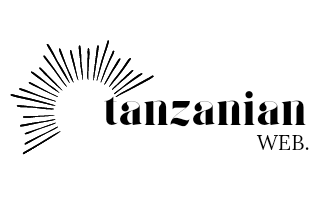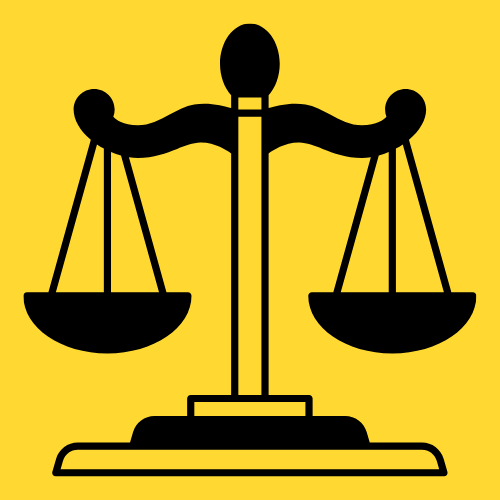“50”, Aptitude Test Questions and Answers for Quality Assurance Officer II – NACTVET
Dear applicants,
This collection of questions and answers has been carefully prepared to help all of you to understand the key areas tested during the NACTVET Quality Assurance Officer II interview. The goal is to provide a useful, and practical study guide so you can all perform confidently and fairly in the selection process. I wish you the best of luck, and may this resource support you in achieving success!
For Personal Use by Applicants Preparing for NACTVET QA Officer II Interview
✅ A. INSTITUTIONAL AND REGULATORY KNOWLEDGE
1. What is the role of NACTVET in education system?
NACTVET regulates and coordinates technical and vocational education and training in Tanzania, ensuring quality assurance, registration, accreditation, and curriculum development in line with national goals.
2. Which law establishes NACTVET and what is its mandate?
NACTVET is established under the National Council for Technical and Vocational Education and Training Act, Cap. 129 R.E. 2019, with the mandate to oversee quality assurance in technical and vocational training institutions.
3. What is curriculum validation in the context of technical education?
Curriculum validation is the process of verifying and approving curricula to ensure they meet industry needs, educational standards, and are aligned with national development objectives.
4. Why is stakeholder consultation important in curriculum development?
It ensures relevance, acceptability, and responsiveness of the curriculum to real-world industry and societal needs.
5. What documents usually accompany a submitted curriculum for validation?
Common documents include situational analysis reports, stakeholders’ consultation reports, course outlines, learning outcomes, assessment plans, and syllabi.
________________________________________________________________________
✅ B. RECORDS MANAGEMENT
6. How would you maintain records of submitted curricula?
By using a well-structured filing system (digital and/or manual), ensuring timely entry, classification, indexing, retrieval, and archiving based on best records management practices.
7. What is metadata in records management and how is it useful?
Metadata refers to data about data, such as the date of submission, institution name, program title, and version number. It aids in tracking and retrieval of curriculum records.
8. What challenges are common in curriculum records management and how would you address them?
Challenges include duplication, loss, or misclassification. Addressed by digitization, standard operating procedures (SOPs), backups, and access control.
9. How would you organize physical and digital records for easy retrieval?
By using labeling systems, indexing tools, document management software, and categorizing records by institution, date, and program level.
10. How do you ensure confidentiality and security in managing records?
Through access controls, passwords for digital systems, restricted access to physical files, and compliance with institutional data protection policies.
________________________________________
✅ C. CURRICULUM ASSESSMENT AND FEEDBACK
11. What factors do you consider when assessing a curriculum’s supporting documents?
Relevance of situational analysis, evidence of stakeholder engagement, alignment with NACTVET standards, clarity of objectives, and feasibility of delivery.
12. How would you identify gaps in curriculum documents?
By cross-checking against NACTVET curriculum development guidelines and validation checklists.
13. Describe the process of reviewing a situational analysis report.
Assess the methodology used, data sources, stakeholder involvement, and conclusions drawn regarding labor market needs and training gaps.
14. What is the importance of stakeholder engagement reports in curriculum development?
They confirm that industry needs have been considered and ensure the curriculum is practical, relevant, and accepted by employers.
15. How would you write effective feedback to an institution on a submitted curriculum?
Be clear, objective, reference specific issues, recommend actionable improvements, and maintain a professional and supportive tone.
________________________________________
✅ D. VALIDATION LOGISTICS & EXPERT COORDINATION
16. What preparations are necessary before a curriculum validation meeting?
Confirm venue and date, notify participants, prepare validation documents, provide stationery and refreshments, and ensure audio-visual tools are available.
17. How do you ensure validation meetings are efficient and effective?
By preparing in advance, adhering to the agenda, appointing a competent chairperson, and documenting key feedback and resolutions.
18. What qualities should you look for when identifying curriculum validation experts?
Relevant qualifications, experience in education or industry, understanding of NACTVET standards, and ability to critically assess curricula.
19. How do you maintain a list of validation experts?
By creating a structured database with contact details, qualifications, areas of expertise, and previous participation records.
20. How do you evaluate the effectiveness of validation experts?
Through post-meeting reviews, feedback from peers, and assessment of their contributions to improving curriculum quality.
________________________________________
✅ E. QUALITY ASSURANCE AND MONITORING
21. What is quality assurance in the context of technical education?
It’s a systematic process of ensuring that training programs meet set standards and are continuously improved for relevance and effectiveness.
22. What are the key components of quality curriculum validation?
Alignment with qualification frameworks, stakeholder involvement, clarity of outcomes, practical relevance, and compliance with policy standards.
23. How do you handle disagreements during curriculum validation meetings?
Facilitate professional dialogue, document differing views, seek consensus, and refer to institutional guidelines for final decisions.
24. What are the consequences of approving a poor-quality curriculum?
It leads to poorly trained graduates, employer dissatisfaction, wasted resources, and reputational damage to the institution and NACTVET.
25. How do you ensure consistency in feedback across different institutions?
By using standardized templates, validation checklists, and guidelines provided by NACTVET.
________________________________________
✅ F. COMMUNICATION AND INTERPERSONAL SKILLS
26. Describe a time you had to deliver critical feedback. How did you handle it?
(Provide a brief STAR example showing professionalism, clarity, and solution-focused feedback).
27. How would you respond to an institution that disagrees with your validation feedback?
Engage respectfully, explain the rationale, refer to validation standards, and invite resubmission after necessary revisions.
28. What are key qualities of a Quality Assurance Officer?
Attention to detail, analytical thinking, communication skills, objectivity, and knowledge of educational policies.
29. Why is teamwork important in curriculum validation?
It allows for diverse perspectives, shared responsibilities, and more comprehensive assessment of curriculum quality.
30. What strategies would you use to build a good working relationship with institutions?
Timely communication, professional courtesy, consistent feedback, and offering technical support when needed.
________________________________________
✅ G. TECHNICAL AND DIGITAL COMPETENCE
31. Are you familiar with any education management information systems (EMIS)?
(Yes, mention specific systems used, such as NACTVET MIS, and explain how you used them for records or validation tracking.)
32. How do you use Excel or database tools to manage validation data?
By creating spreadsheets with filters, using formulas for tracking submissions, and generating reports on validation status.
33. What file formats are best for curriculum document submissions and why?
PDF for official submissions (preserves format), Word for editable drafts, Excel for data forms.
34. How can technology improve validation processes?
It increases efficiency, enhances collaboration, ensures accuracy, and enables real-time tracking of curriculum status.
35. What challenges have you encountered with digital recordkeeping?
Possible issues: data loss, unauthorized access, system downtime — resolved through backups, training, and secure platforms.
________________________________________
✅ H. GENERAL INTERVIEW COMPETENCE
36. Tell us about yourself.
(A brief summary of your education, experience, and interest in quality assurance and curriculum validation.)
37. Why do you want to work at NACTVET?
Because I’m passionate about improving education quality in Tanzania and I admire NACTVET’s role in ensuring that training programs meet national and global standards.
38. What is your understanding of the role of a Quality Assurance Officer?
Ensuring that curricula and training programs are relevant, meet set standards, and align with NACTVET’s regulatory framework.
39. What are your strengths related to this position?
Strong attention to detail, experience in document review, good communication, and familiarity with educational standards.
40. What is your biggest professional achievement so far?
(Choose one that relates to document review, curriculum, or process improvement.)
________________________________________
✅ I. ETHICS AND PROFESSIONALISM
41. How do you handle confidential curriculum information?
By keeping physical files secure, restricting digital access, and never disclosing sensitive information without authorization.
42. What would you do if you discovered an institution submitted plagiarized curriculum content?
Report to superiors, recommend rejection of the submission, and advise the institution to submit original work.
43. How do you balance fairness and strict adherence to standards in validation?
Apply rules consistently, assess based on evidence, and provide constructive feedback to help institutions improve.
44. What would you do if pressured to approve a substandard curriculum?
Uphold professional ethics, document the situation, and report to the appropriate authority if needed.
45. How do you handle high workloads and tight deadlines?
Through planning, prioritization, teamwork, and use of productivity tools.
________________________________________
✅ J. FUTURE FOCUS AND COMMITMENT
46. Where do you see yourself in five years?
Serving in a senior quality assurance role, contributing to policy development and continuous improvement of training standards in Tanzania.
47. How do you stay updated with changes in technical education?
By attending workshops, reading policy updates, engaging in professional networks, and following NACTVET publications.
48. How would you contribute to improving the validation process at NACTVET?
Suggest automation, develop templates, provide training to institutions, and propose stakeholder feedback loops.
49. What motivates you to work in curriculum and quality assurance?
The opportunity to shape national education outcomes and ensure graduates are well-prepared for the workforce.
50. Do you have any questions for us?
(You may ask: How does NACTVET plan to digitize the validation process? What are the key challenges the quality assurance team currently faces?)


%20(10).png)





0 Comments
PLACE YOUR COMMENT HERE
WARNING: DO NOT USE ABUSIVE LANGUAGE BECAUSE IT IS AGAINST THE LAW.
THE COMMENTS OF OUR READERS IS NOT OUR RESPONSIBILITY.